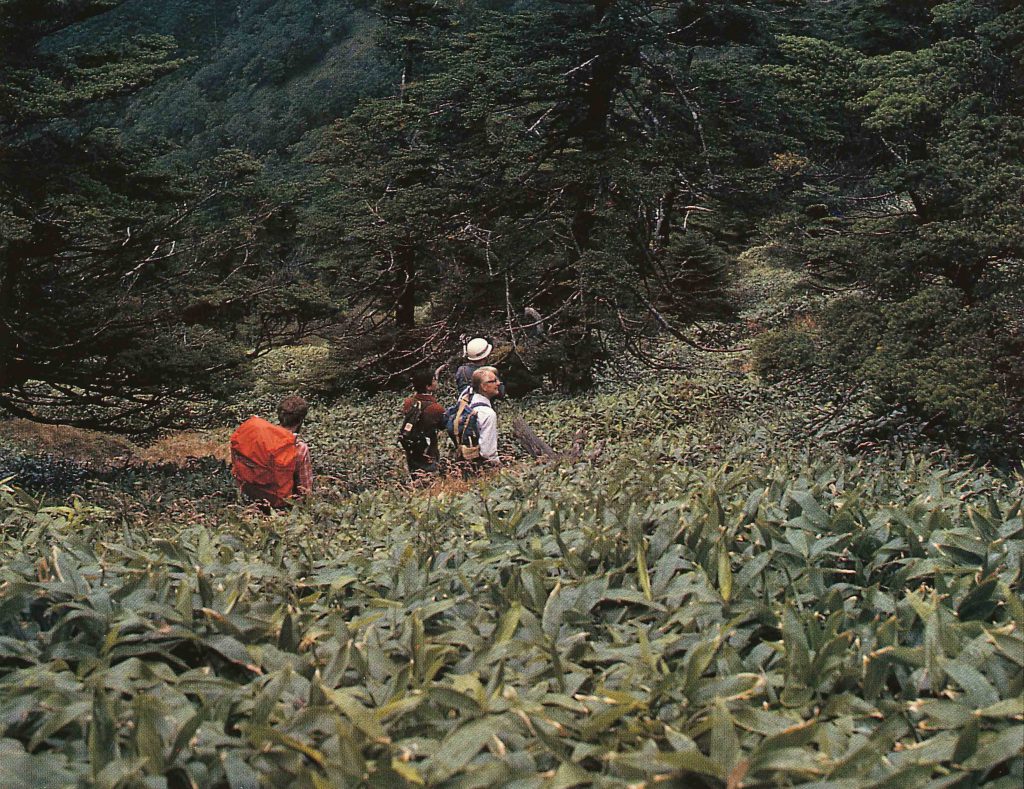A larger collaborative project
Of the four priority areas in which Nordic cooperation has been assessed as particularly important, one has come to dominate during the 1970s and 1980s. This concerns the collection and acquisition of lignos specially adapted for the Nordic climate areas.
COLLECTION EXPEDITIONS
About a year after the formation of NAU, collection expeditions began to be planned on a common Nordic basis. Due to the extremely changing climatic conditions, it was clear that at this stage it would hardly be possible to try to cater for all parts of the Nordic region. Two climatically very different parts of the world, where material of interest to at least three Nordic countries should be found, were chosen.
1. Southern Hemisphere
It is perhaps not immediately obvious that the plant world in such remote parts of the earth and with apparently such a different climate as, for example, New Zealand and South America would have something to offer the cold Nordic region. Previous Nordic experience with a few southern hemisphere genera, e.g. Araucaria, Hebe and Nothofagus, had long indicated, however, that the more oceanic parts of Northern Europe have a climate approaching that of Southern South America and New Zealand, i.e. where the said family is mainly based.
Southern hemispheric material could thus become important for the western parts of the Nordic region, i.e. parts of Denmark, Sweden and Iceland and especially the winter-mild Western Norway and the Faroe Islands.
It fell to Denmark and Norway to organize two expeditions, one to South America under Danish auspices and one to New Zealand, Tasmania and Australia under Norwegian auspices. Financial contributions were sought and received from a number of funds, of which the Nordic Culture Fund should be mentioned here in particular.
The expeditions were carried out in 1974-1975. Over 2,000 collections of roughly 400 species consisting of seeds, plants and/or herbarium material were collected.
In addition to Nordic arboreta and botanical gardens, the material was distributed to around 40 non-Nordic institutions.
2. East Asia
In the somewhat more continental parts of the Nordic region, there were previously positive experiences with lignoses from East Asia. For the truly continental parts, ie. Finland, north-central Sweden and some parts of Norway, with plants from mainland East Asia, for the somewhat milder parts, i.e. Southern Sweden and Denmark, with plants from Japan. An expedition to South Korea was organized under Finnish auspices in 1976 and in the same year one under Swedish auspices to Japan.

Photo: Tor Nitzelius
The expeditions were really good examples of Nordic cooperation in that both had participants from four of our five countries. The South Korea expedition brought in close to 800 seed numbers as well as hundreds of herbarium sheets of mainly woody plants. The Japanese material included just under 1,000 numbers.
PLANT PROCUREMENT THROUGH ANOTHER FORM OF COOPERATION
The collection expeditions undertaken so far have thus yielded a good yield in terms of new plant material adapted to the Nordic climate and have also been very stimulating for continued Nordic cooperation.
However, organizing and administering fundraising expeditions with participants from several different countries is quite time-consuming and often requires the organizers to be largely freed from their regular institutional duties. There is thus a natural limitation here. However, thanks to the close cooperation between Nordic institutions with arboretum operations, there are also other ways to go when it comes to plant procurement.
During the 1970s and 1980s, individual Nordic institutions or members of NAU undertook or participated in fundraising trips to areas as widely varied as Amur, Tien Shan, Nepal, Pakistan, Turkey, NW Africa, Canada, USA and Mexico. Material from these trips has been continuously offered to the Nordic institutions.
Furthermore, the international contact network of botanic gardens, horticultural and forestry institutions across large parts of the world, of which the institutions represented on the committee are a part, is another important source of material. In particular for the more climate-sensitive parts of the Nordic region, for which the Committee has not yet been able to organize special collection expeditions, these alternative sources of material are of particular importance.
The conclusion is that the Nordic arboretum cooperation in terms of procuring plant material works well and is of great importance to the individual institutions.
